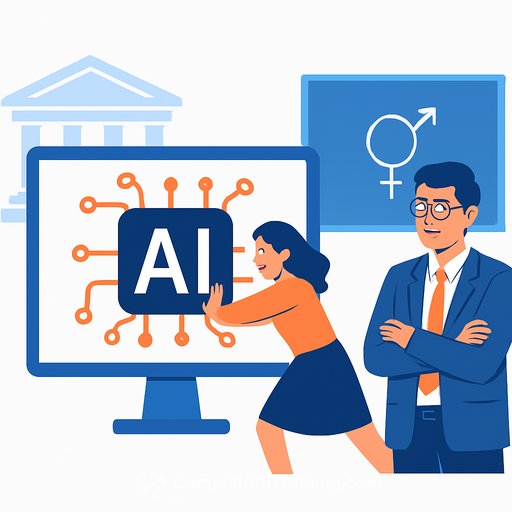Higher Education Must Pivot to Skills-First AI Training
At a Brookings forum on Artificial Intelligence and Upskilling, Andrew Ng and fellow panelists delivered a clear message: four-year degrees alone won't meet workforce demand. Institutions need flexible, skills-first pathways that map directly to real jobs-and they need them now.
Ng noted that AI tools are becoming more accessible, but the number of specialists is still far below what the economy requires. The fix is not abandoning degrees, but pairing them with focused, stackable training that gets people job-ready.
Why Degrees Alone Are No Longer Sufficient
"The number of software engineers, the number of AI developers is far smaller than the number of people that we hope will be able to do the work to build custom AI systems," Ng said. Short, targeted programs-think nanodegrees and industry-aligned certificates-let learners acquire in-demand skills without the delay and cost of a full degree.
These pathways work best alongside existing programs: a CS major with applied ML projects, or a history major with data literacy and analytics. The goal is practical capability, not just credit hours.
What Employers Are Signaling
Dr. Gad Levanon (Burning Glass Institute) pointed to a decline in job posts requiring a BA, reflecting a shift toward skills-based hiring. Employers need people who can do the work, not just hold a credential.
David Estrada (Nuro) described heavy reliance on workers with visas because domestic supply of technical talent is thin. His push: grow STEM capacity earlier and faster, and build targeted programs with employers-like Nuro's fleet technician track with De Anza College.
Measure Skills, Not Just Courses
Dr. Morgan Frank (University of Pittsburgh) argued that institutions lack visibility into the skills their courses actually build and how those map to career outcomes. Emerging datasets that parse syllabi and learning objectives can close that gap.
Define learning outcomes as verifiable skills. Then track whether students use those skills in internships, projects, and jobs.
What To Do Now: A Practical Playbook
- Build stackable microcredentials aligned to specific roles (data analyst, ML ops, prompt engineer, product analytics).
- Offer short, credit-bearing certificates and bootcamps that ladder into degrees; grant credit for prior learning and industry certs.
- Map every course to explicit skills and industry tools; publish a "skills transcript" alongside GPA.
- Make data literacy a core outcome across business, social sciences, and liberal arts (Excel, SQL, Python basics, visualization, statistics).
- Bundle skills: coding + math + communication + collaboration. Teach team-based, project-driven courses with real datasets.
- Co-develop curricula with employers; use advisory boards; bring in adjuncts from industry for capstone oversight.
- Create AI sandboxes where students safely build with leading models and APIs; require responsible use and documentation.
- Scale work-integrated learning: apprenticeships, co-ops, and employer-led capstones tied to hiring pipelines.
- Upskill faculty with paid microcredentials in AI pedagogy, data literacy, and project-based assessment.
- Track outcomes: placement, role titles, skills used on the job, and salary bands by program. Iterate every year.
- Expand K-12 pipelines with dual enrollment and bridge programs in math, CS, and data.
- Increase access: scholarships for short-form learning, flexible scheduling, and modular start dates.
Liberal Arts Still Matter-If You Add Data
Panelists emphasized that high performers blend technical and human skills. Pair writing, ethics, and critical thinking with analytics, experimentation, and collaboration.
Levanon noted that marketing, HR, finance, and operations now rely heavily on data. Students should learn to frame questions, query data, and turn findings into business decisions.
Access and Equity: Who Gets to Build With AI?
Ng argued that society benefits when more people can build custom AI-not just those inside elite tech firms. Prebuilt tools won't cover the long tail of use cases in health, public sector, education, and small business.
He also flagged a common funding mistake: high-quality training often pays off within six months and continues to compound for years, yet institutions and policymakers underinvest. Short-form, outcomes-driven programs deserve priority.
Partnerships Worth Copying
Nuro's work with De Anza Community College shows how targeted programs can open doors to technical work without a four-year degree. Replicate that formula: start with employer needs, define the skills, build the labs, and validate with hiring.
Resources
- Brookings Center on Regulation and Markets - event host and ongoing research on AI and workforce policy.
- Burning Glass Institute - labor market insights on skills-based hiring.
- Complete AI Training: Courses by Skill - a reference for building skills-first pathways and advising learners.
Bottom line for academic leaders: keep degrees, but make skills the unit of value. Build fast, stackable, credit-bearing options, prove outcomes, and keep updating the map from course to career.
Event note: Hosted by the Brookings Center on Regulation and Markets; moderated by Loni Mahanta and Dr. Alberto Rossi.
Your membership also unlocks:






